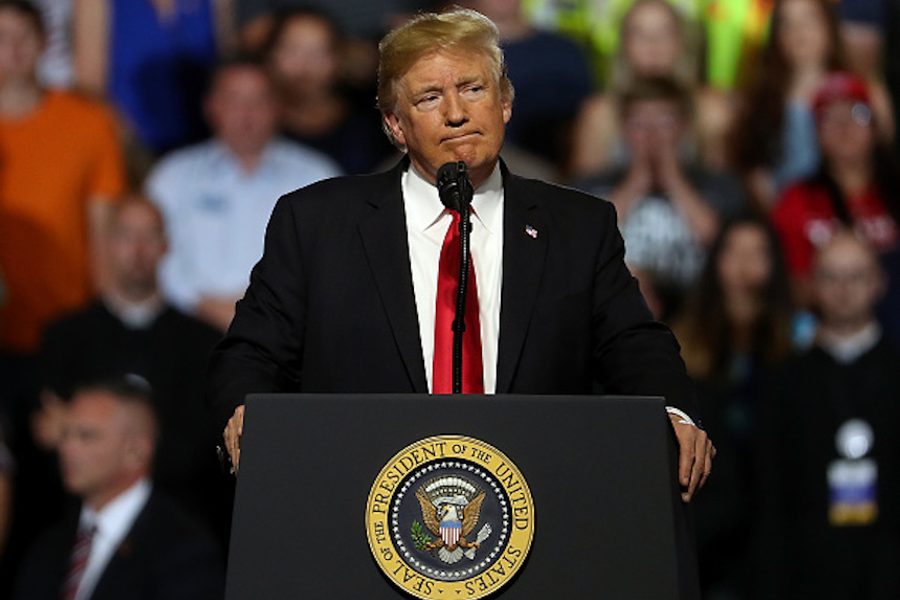From Italy to Hungary, the Trumps of Europe Are Rising to Power
The leader of Italy’s far right, an admirer of Trump, has suggested a “mass cleansing” of Roma.
Joel Bleifuss

Across the European Union and the United States, the far Right is stoking ethno-nationalist sentiments and ginning up hatred of immigrants.
On June 8, Austrian Chancellor Sebastian Kurz shut down seven mosques. On June 13, he called for the creation of an ominously titled “Axis of the Willing” to stop “illegal immigration.” (The name is a play on the terms “Axis Powers” and George W. Bush’s “Coalition of the Willing.”) The 31-year-old People’s Party leader’s invitation was accepted by German Interior Minister Horst Seehofer (head of the right-wing Bavarian Christian Social Unity Party) and Italian Interior Minister Matteo Salvini (leader of the far-right League, which on June 1 formed a government with the anti-immigrant Five Star Movement).
Hungarian Prime Minister Viktor Orbán also welcomed creation of the Axis. Under his leadership, Hungary has teamed up with right-wing governments in Poland, the Czech Republic and Slovakia — the so-called Visegrád Group — to oppose immigrant quotas for E.U. member states. As Orbán explained in an October 2017 speech, “If we want a Hungarian Hungary and a European Europe — and that is exactly what we want — then we must also want a Christian Hungary and a Christian Europe, instead of what now threatens us: a Europe with a mixed population and no sense of identity.”
Orbán was easily re-elected in April when his right-wing Fidesz party garnered 49 percent of the vote. An additional 19 percent went to an even further right party, Jobbik (Movement for a Better Hungary). Jobbik leaders have supported building a wall to keep out immigrants (in 2015, a 109-mile section was constructed on the Serbian border), creating a registry of Hungarian Jews, and solving “the Roma problem.”
Italy’s Salvini also thinks his country needs to address “the Roma question.” On June 18, he announced that he would conduct a “census of Roma in Italy” and expel all Roma who are not legal residents. (“Italian Roma? Unfortunately, we have to keep them,” he said.) In the wake of his proposed Roma solution, an interview from February 2017 surfaced in which Salvini said, “We need a mass cleansing, street by street, neighborhood by neighborhood, piazza by piazza.” The man who would soon be interior minister added that Italy should learn from President Donald Trump.
On June 22, Trump defended his immigration policies, like the separation of immigrant children from their parents. Meeting with what he called “angel families,” Trump honored those “American citizens permanently separated from their loved ones” — “permanently separated because they were killed by criminal illegal aliens.” (Fact: Undocumented immigrants commit fewer crimes per capita than native-born citizens.) Following that gathering, Trump tweeted, “We must maintain a Strong Southern Border. We cannot allow our Country to be overrun by illegal immigrants.”
No, what we cannot allow is for neofascists like Kurz, Seehofer, Salvini, Orbán and Trump to sow hate and scapegoat their way to power. Will Hutton, a political economist at Oxford University, put it this way: “The global rise of conservative nationalism … is the menace of our times. … Europe is reacquainting itself with its darkest demons.”
For its part, the United States under Trump is communing with its own exceptional evil spirits. Of course, a cynic could maintain that Trump has not totally corrupted the American body politic: Immigrant children will no longer be separated from their parents. Instead, families will be rounded up and held together in ICE prison camps. Score one for the GOP.
Joel Bleifuss, a former director of the Peace Studies Program at the University of Missouri-Columbia, is the editor & publisher of In These Times, where he has worked since October 1986.









